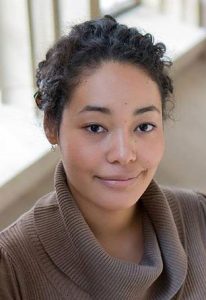UW’s CSNE (Center for Sensorimotor Neural Engineering) hosted its 2015 Hackathon November 6-9. At this second annual event, fifteen students from UW, MIT, San Diego State University and Spelman College formed five teams to develop novel technologies to address sensorimotor neural engineering problems. The teams’ projects aligned with the CSNE’s core missions of uniting the human brain with technology, improving the quality of life for people suffering from sensorimotor neural disabilities and engaging the next generation of scientists and engineers.
The Hackathon, which started in 2014, spun out from a UW course called “Technology Sandbox” where student teams devised solutions to neural engineering problems. UW Bioengineering Ph.D. student and CSNE Hackathon founder Tyler Libey saw the success of the Technology Sandbox course first-hand and was inspired to make a similar collaboration opportunity available to more students at the UW and other universities.

UW Bioengineering Ph.D. student Nile Wilson
BioE Ph.D. student Nile Wilson participated in last year’s Hackathon, and the experience motivated her to take a lead role in organizing this year’s event. “I had a lot of fun last year,” she explains. “I was happy to learn that I could get involved with student leadership through organizing this event.” Tyler Libey returned as a volunteer, and other BioE students James Wu and Devapratim Sarma helped out as well.
After introductions and team-building exercises the first day of the competition, teams had 36 hours over the next two days to design and build their projects using a box of common supplies, including open source software packets, wires, resistors, Arduinos and more. Teams also selected one or two advanced devices, such as the Oculus Rift Development Kit 2, the Myo Armband or the iRobot Roomba, supplied by event sponsors Oculus VR, Washington Research Foundation and UW CoMotion.
On the last day, the teams presented their projects to a panel of faculty and industry judges, which included CSNE Executive Director and UW BioE Research Associate Professor Eric Chudler. The judges evaluated the teams on their alignment with the CSNE mission, project innovation, technological merit and presentation quality.
The winning team, “Face the Music”, presented an affordable, open-source electromyography (EMG) platform for facial muscle rehabilitation and artistic expression. The system detects muscle activity via wet electrodes placed on the wearer’s cheeks and above their eyebrows, and a source electrode placed below the hairline. The signals are amplified, digitized and transmitted using a Backyard Brains Spiker Shield and Arduino Uno to the device’s processing environment, which maps the signals to images and sounds.
Reflecting on her experience organizing the event, Nile says she enjoyed the event’s atmosphere of friendly competition. “It was refreshing to see that everyone wanted each other to succeed in creating great projects,” she explains. This collaborative environment resulted in success for all teams involved, she says. “All five teams produced unique and well-developed demos that exceeded my expectations.”
Learn more about the CSNE Hackathon
Other 2015 Hackathon teams:
| Revision: A smart cane for the blind that uses a sonar sensor to receive distance information about objects within its field of view, and transmits vibration feedback to the handle. | |
| Sunshine Arm: An educational advice developed to demonstrate how limited upper limb electrical activity can be used to control a robotic arm. | |
| Rocket Brain: An open-source game designed to provide an interactive environment for use as a biofeedback platform, as a tool in STEM outreach and in neuro-rehabilitation research. | |
| EmoVibe: A discreet wearable device for autistic patients that performs facial expression recognition and provides vibration feedback in real time. |


